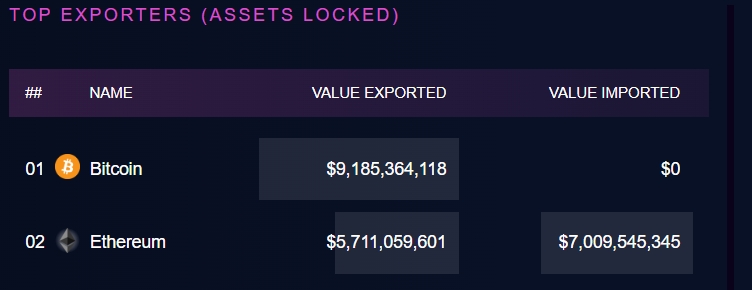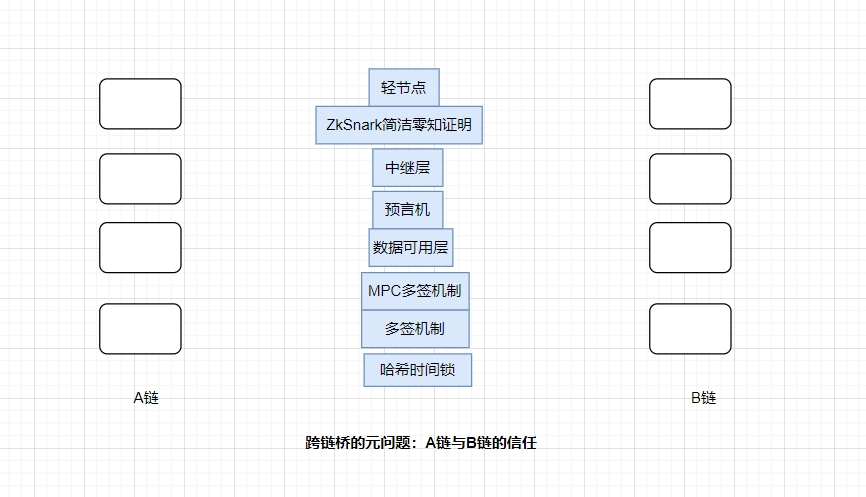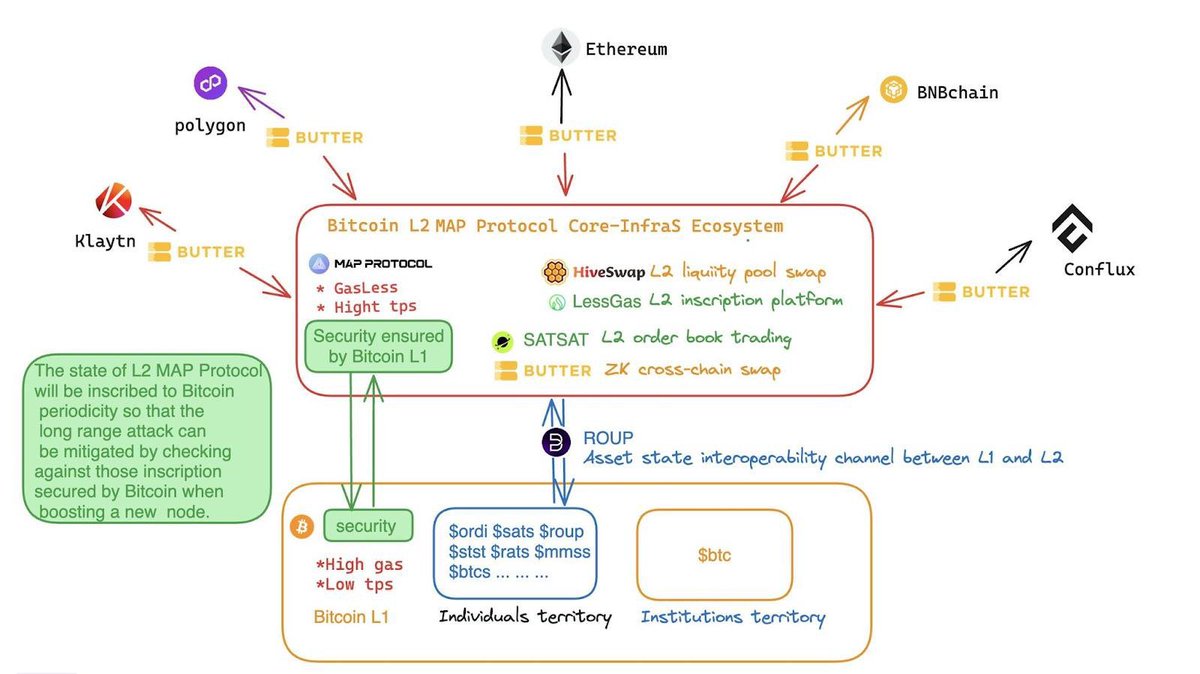Some thoughts on Bitcoin L2: Taking the Map protocol as an example
Written by: NingNing
The birth, growth and popularity of Ordinals, BRC20, BRC420, Atomicals and other inscription protocols in the past 23 years have completely updated the connotation of the Bitcoin ecological concept.
When it comes to Bitcoin ecology, the first thing that comes to mind for industry professionals is the Lightning Network, the sidechain LiquidNetwork, and the client-side verification intelligence.contract RGB and other high-end protocols.
After 23 years of the perfect storm of inscriptions, now when people mention the Bitcoin ecosystem, various images of inscription assets will emerge in everyone’s mind.
If we compare the evolution of Bitcoin ecology in 23 years to the ecology of the biosphere, the early Sub10K inscription NFTs without rules and meaning are like fungi and microorganisms that grow arbitrarily on empty soil; Yuga's TwelveFold and the first inscription of the BRC20 protocol areToken ORDI and Bitcoin Frog NFT are like new plants breaking out of the soil on the substrate; various MeMe inscriptions since October 2023 are like wild weeds growing wildly; and this wave of deep adjustments before the Spring Festival is like a wildfire that burns away the weeds, and application-type inscriptions are beginning to emerge.
时至 24 年 1 月,比特币生态已经变成一个繁荣而热闹的加密行业新场域。而比特币 L2 在这段时间,与比特币 VM 等一道,成为比特币生态的一个显学。
The market has two basic expectations for the functions of Bitcoin L2: OrdFi (Inscription DeFi) and unlocking Bitcoin liquidity.
OrdFi (OrdFi). Benny's Trac team used Taproot script to implement the Swap function of OrdFi. But its interactive experience is far behind that of DEX built on EVM.
In this context, OrdFi's other solution, Bitcoin L2, has received more attention from the market.
Taking the Map protocol as an example, users can cross-chain the BRC20 inscription to the Map Relayer network through Map's ZK light node cross-chain bridge.
Different from the common Relayer in cross-chain bridges, the Map Relayer network adopts the PoS consensus mechanism and supports and is compatible with EVM.
After BRC20 assets are cross-chained to the Map Relayer network, users can trade ERC20 like on DEX TokenTrade BRC20 assets like that.
Unlocking Bitcoin liquidity. As shown in Figure 1, the current Bitcoin outflow value is $9.139 billion, accounting for only ~1.08% of Bitcoin's total market value. The Ethereum outflow value is $5.711 billion, accounting for 1.8% of Ethereum's total market value. Bitcoin's outflow value ratio is 66.66% lower than Ethereum's.

Moreover, the main channels for the outflow of Bitcoin value at present are WBTC and REN protocols, both of which rely heavily on trust in centralized entities.
The industry expects that Bitcoin L2 can unlock more Bitcoin liquidity in a more trustless, verifiable and transparent way, at least increasing it to the level of Ethereum's outflow value ratio.
The industry has a basic consensus on the functional expectations of Bitcoin L2. However, there is no consensus on how to implement Bitcoin L2. The options are:
-
Classical solution: state channel, client verification, side chain, OmniLayer;
-
New solutions: ZK light node, oracle + light node, Rollup + DA, MPC multi-signature mechanism. These new Bitcoin L2 solutions are very similar to the cross-chain bridge solution.

BlockchainThe meta-problem of L2 is to solve the trust problem between Alice and Bob; the meta-problem of cross-chain bridge is to solve the trust problem between chain A and chain B; the meta-problem of L2 is to solve the trust problem between chain L1 and chain L2. They are essentially the same problem, that is, how two entities can reach a consensus with trust.
As Crypto Vedo said, the essence of L2 is a cross-chain bridge. The relay layer supports VM cross-chain bridges such as Map Protocol and ZetaChain, and it is difficult to clearly define them as cross-chain bridges or L2.
The characteristics of Bitcoin L2 are very different from Ethereum L2 in one aspect:
Ethereum's L2 has the luxury of rolling up all state data in batches to the Ethereum mainnet for storage without worrying about accelerating Ethereum's state expansion.
Bitcoin LXiaobai NavigationThe first principle of 2 is that the consensus of the Bitcoin main network cannot be overloaded. Therefore, most classical solutions choose off-chain expansion solutions to minimize the load pressure on the Bitcoin main network.
Among the new solutions, the ZK light node solution adopted by the Map protocol and the Rollup+Celesita DA+ Bitcoin network as the asset settlement layer solution can better balance scalability,SafetyThe relationship between performance and load pressure on the Bitcoin mainnet.

In conclusion, Bitcoin L2 carries the mission of OrdFi and unlocking Bitcoin liquidity, but how to implement Bitcoin L2 is a new topic in the crypto industry. Due to the high degree of isomorphism between cross-chain bridges and L2, new Bitcoin L2 based on cross-chain bridge solutions such as the Map Protocol may become an important direction for industry exploration.
The article comes from the Internet:Some thoughts on Bitcoin L2: Taking the Map protocol as an example
Related recommendations: Malaysia Crypto Market Research Report
马来西亚在加密领域的吸引力归因于诸如普通法法院系统、英语熟练度和其健全的监管框架等因素。 撰文:MIIX Capital 引言 马来西亚是最早推出加密监管政策的国家之一,在马来西亚加密货币被归类为证券,并且据财政部长 Lim Guan Eng 称,马来西亚政府…